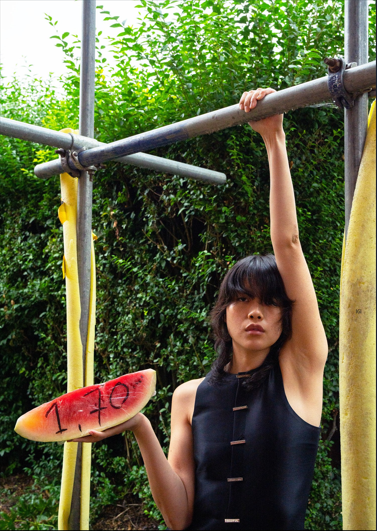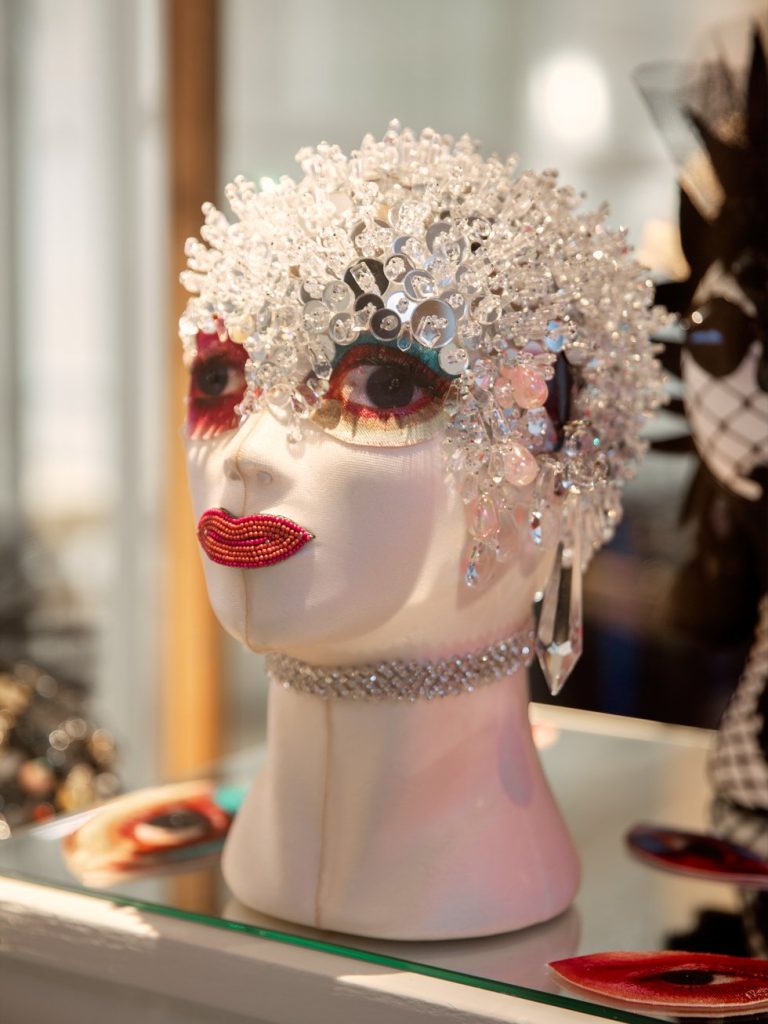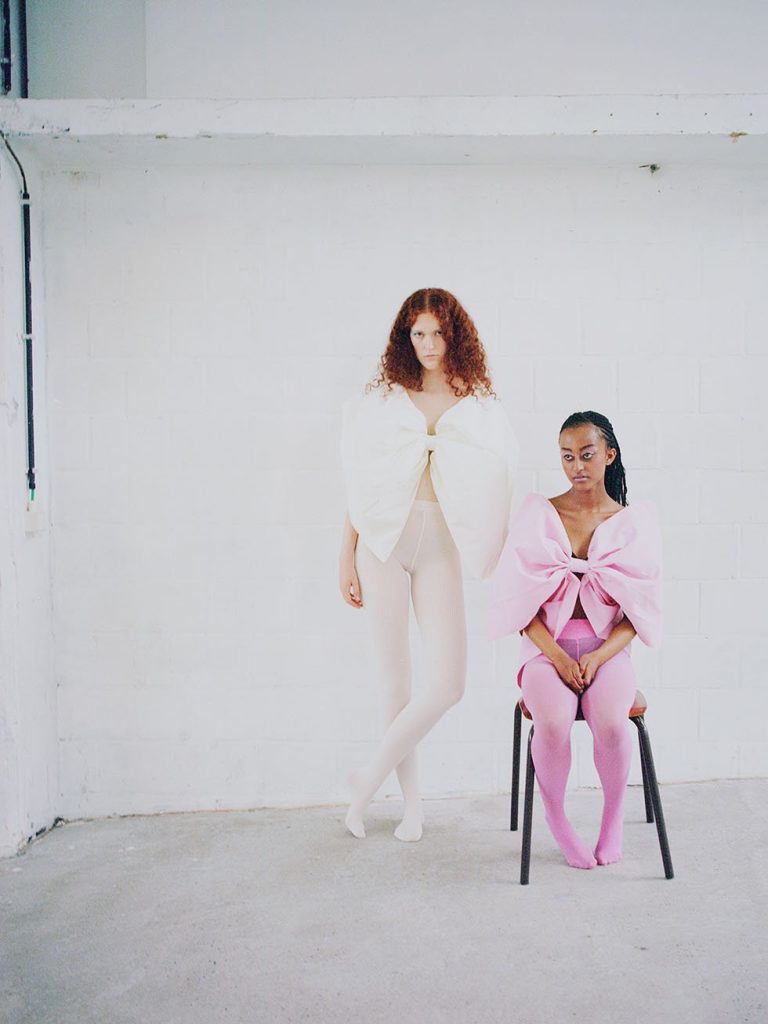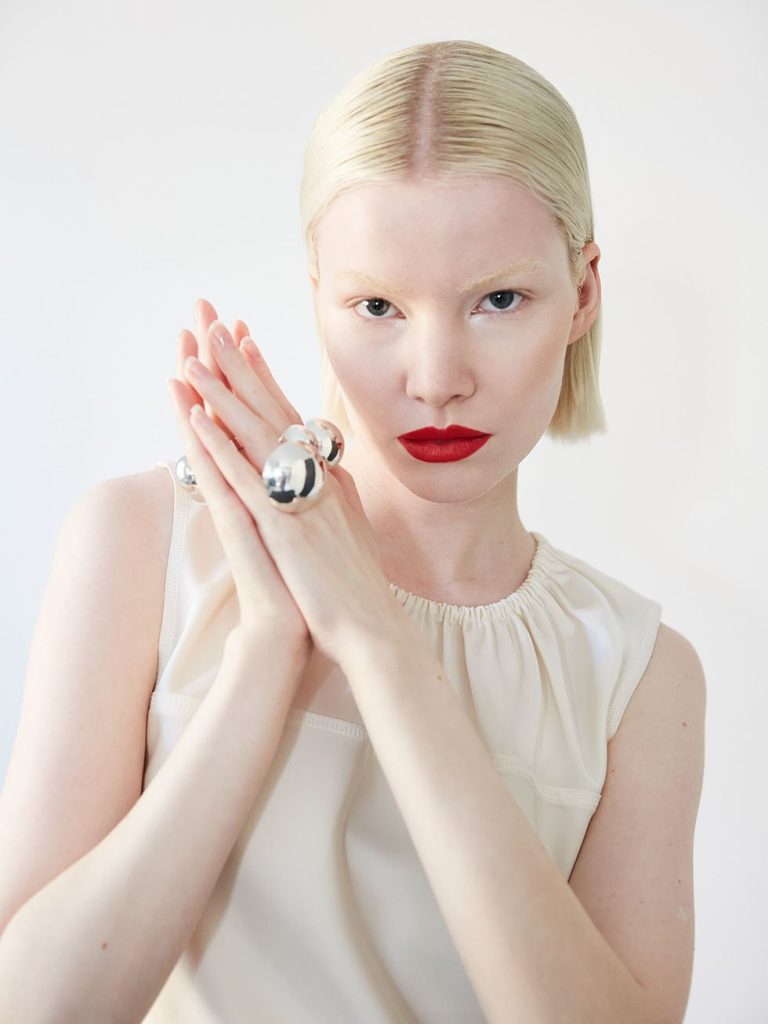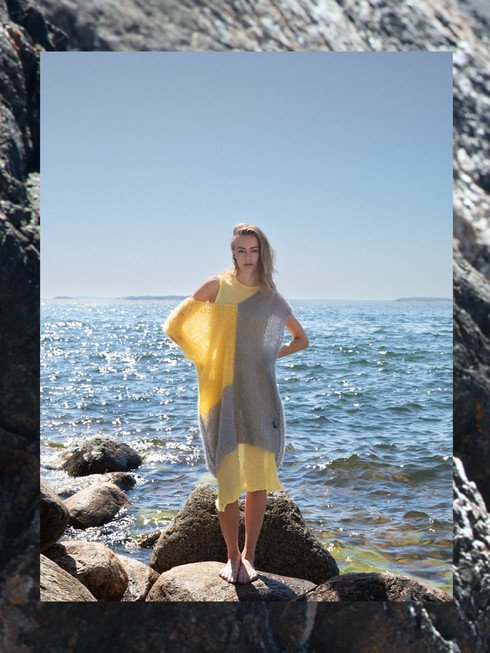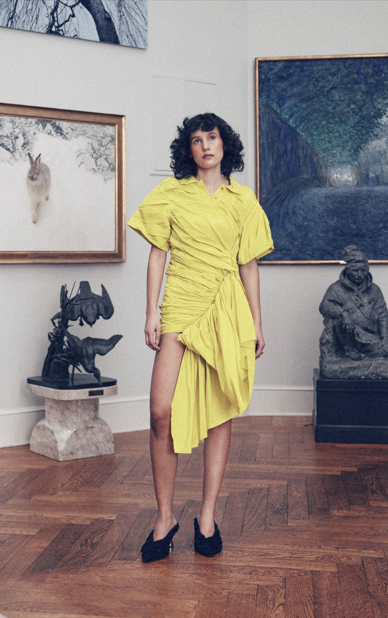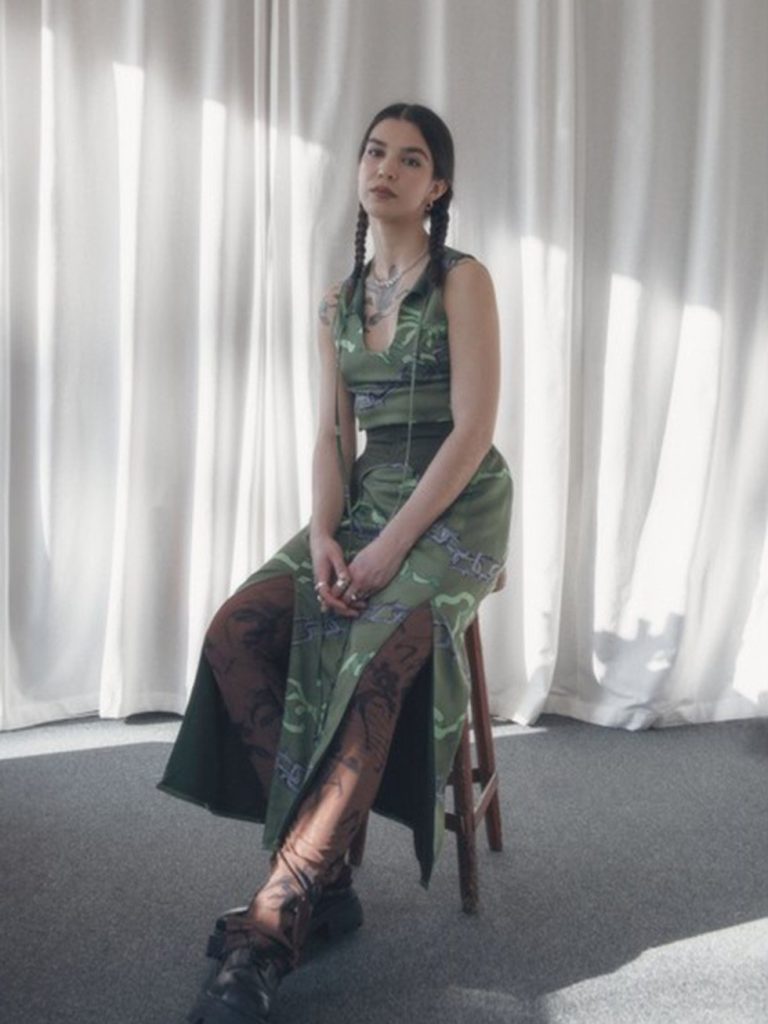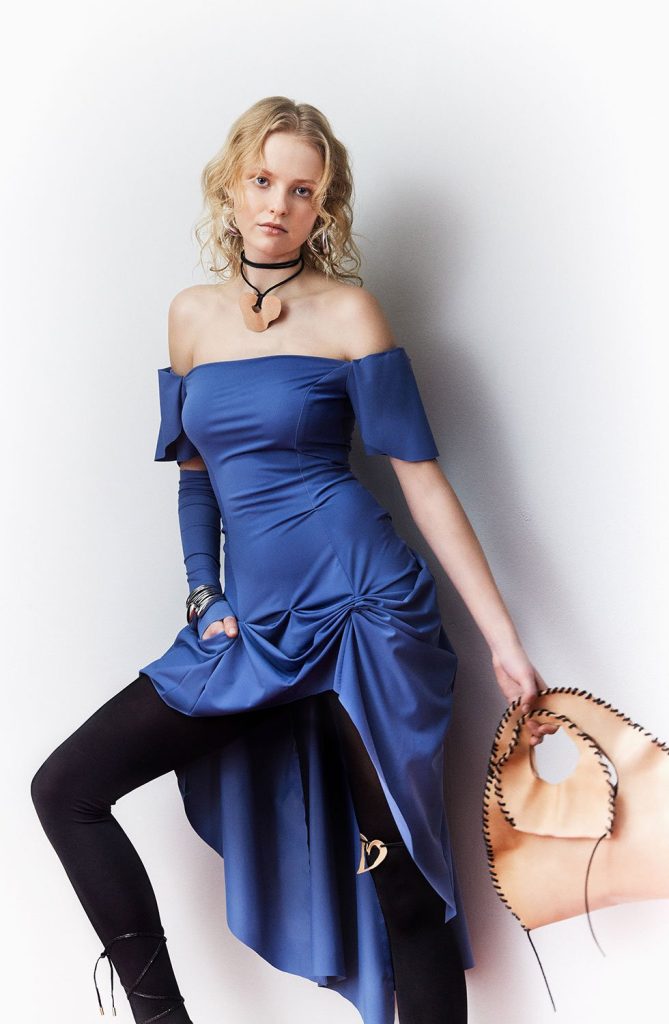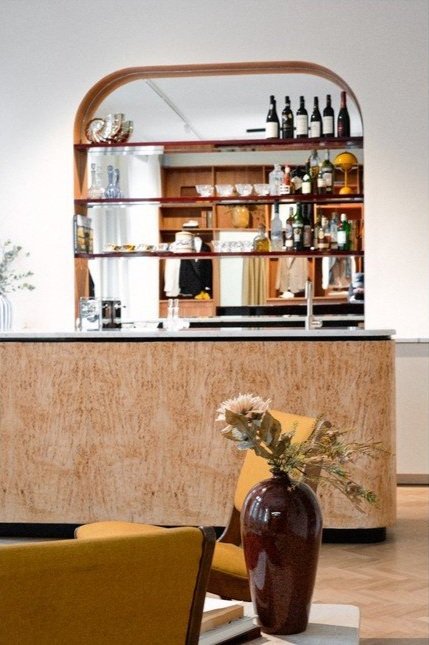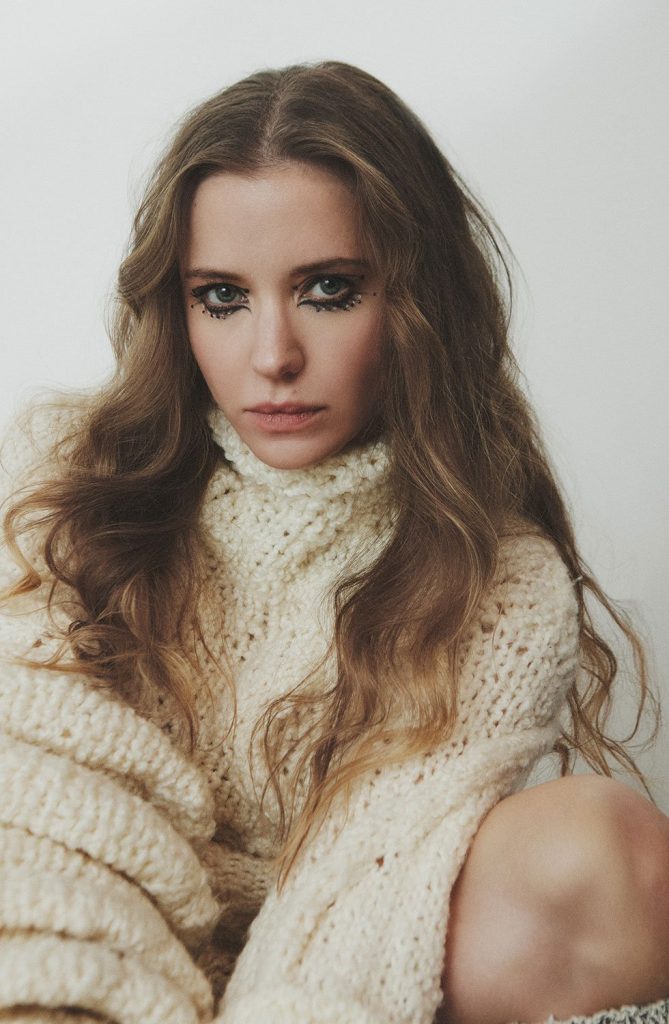The Dull Flame of Desire, An Interview with Byrina Yu
SUGAR Y SAL BLENDS BOLDNESS, HISTORY,AND POLITICS INTO GENDER-FLUIDDESIGNS THAT CHALLENGE THE TRADITIONALBOUNDARIES OF MENSWEARAND WOMENSWEAR. THE BRAND, BORNOUT OF PERSONAL EXPERIENCE ANDOBSERVATION, PROMOTES INCLUSIVITYAND SELF-EXPRESSION THROUGH FASHION.FROM ITS UNOFFICIAL START IN 2019AMIDST THE CHALLENGES OF COVID-19,TO ITS BREAKTHROUGH COLLECTION IN2023, SUGAR Y SAL HAS STEADILY GROWNINTO A SYMBOL OF BRAVE, SUSTAINABLE,AND GLOBALLY INSPIRED FASHION. BYRINA YU, FOUNDER OF SUGAR Y SAL, TALKS ABOUT HER MOTIVATION TO CREATE THE BRAND, HOW POLITICS AND FASHION ARE RELATED AND HER HOPES TO BRING MORE ACCEPTANCE INTO THE WORLD. “I WANT PEOPLE TO WEAR IT REGARDLESS OF AGE OR GENDER, AS LONG AS THEY HAVE AN OPEN HEART AND ACCEPTANCE OF THOSE AROUND THEM.” Natalia Muntean: Could you tell me a bit about your brand? How did it start? And what does the name represent?Byrina Yu: It’s Sugar y Sal, a mix of English and Spanish. The Spanish part is because my husband is from Spain, and he has been my muse for every collection since I was in university. I thought, why not use that as part of the name? The brand was founded in 2019, but we didn’t officially release any collections at first because of COVID and all the bureaucracy went through, moving between Spain and China. The first collection actually came out around 2023-2024. The reason I started the brand is because a lot of my friends are gender-fluid, and I’ve listened to their stories. I’m not one of them, but I’ve seen the social pressure they deal with, especially from their families and in places like China and other countries. I feel like fashion and beauty are ways people can express themselves without pressure. If you try to debate concepts like gender fluidity, people can get defensive or angry. But when you talk about it through something beautiful, like art or fashion, it’s easier for people to see it and accept it, and maybe understand a bit more about how others think. For me, fashion is a way to communicate across different societies, and that’s the motivation behind the brand. Every collection touches on menswear, history, and even politics, especially with how tense things are in the world right now. So many issues come from people not accept- ing each other. So Sugar y Sal is really about communi- cation between different groups of people. NM: Could you tell me a bit about your background?BY: I started university in Kingston, London, where I did my bachelor’s in fashion design. In my second year, I shifted to menswear because I’ve always been drawn to its history, the manufacturers, and all the details. After that, I continued studying menswear at Westminster Uni- versity for my master’s. Then I studied visual merchandis- ing because, by 2018, I wanted my own brand. I felt that studying visual merchandising could help me create a physical shop—not just to make money, but to commu- nicate with customers through the space itself. It’s about more than just shelves; it’s about the message you want to share with them. NM: Communicating through clothes – that’s beautiful! So was it a conscious decision to create 163 non-gendered clothing?BY: Yes! NM: Is having a physical space important to you?BY: Ideally, yes. Eventually, I hope to have one because I think online shopping distances you from people. In a physical shop, people can experience everything—you know, they can smell, touch, and hear what you want to express. You also get to hear their feedback, which is so important. We always want to communicate and understand people—that’s our goal. NM: You said that in your second year of studies you became more interested in menswear and shifted focus. Where did that interest come from, and why did that change happen?BY: I was studying fashion design, and mostly everyone was focused on womenswear. I spent two years in China, in Shanghai, and I felt likeeveryone was doing the same thing. So I started wondering why people weren’t doing menswear, and why menswear trends were so much smaller compared to womenswear. When I moved to Kingston, I spent a lot of time in the library and discovered that, historically, men wore high heels, corsets, lace, and vibrant colours—more fashionable than women at times. It was tied to the fact that men had more power and money than women back then. That got me thinking. People today might not understand the history of menswear or gender roles, and maybe that’s why there’s discrimination against gender-fluid people. I realised that in the future, people might look back at our current discrimination and think it was ridiculous, just like how we look back at past racial discrimination. So I hope people can see through my collection that terms like ‘menswear’ and ‘womenswear’ are just labels. There shouldn’t be borders. Learning about the history of menswear really opened my eyes, and that’s why I decided to focus on it. NM: What do you believe sets Sugar y Sal apart from other brands in the industry?BY: I don’t want to say we’re very special, because every brand is special in its own way, right? But for Sugar, every design is so connected to my personal experience and how I think about things, which makes each piece unique. That’s something I learned at university in London—your perspective needs to come through in your designs. I may not always have solutions to the problems I think about, but I always raise them in my work, and I believe that’s what sets us apart. Of course, other brands have their perspectives too, but that’s our difference. NM: Can you walk me through your creative process when working on a collection?BY: Sure. I’m always sensitive to politics, and I keep up with the news. For this collection, I was inspired by a YouTuber who made a video about a terrorist attack in Barcelona a few years back. The people involved in the attacks were just normal individuals who turned to violence because they didn’t feel accepted by society. Their differences—being

